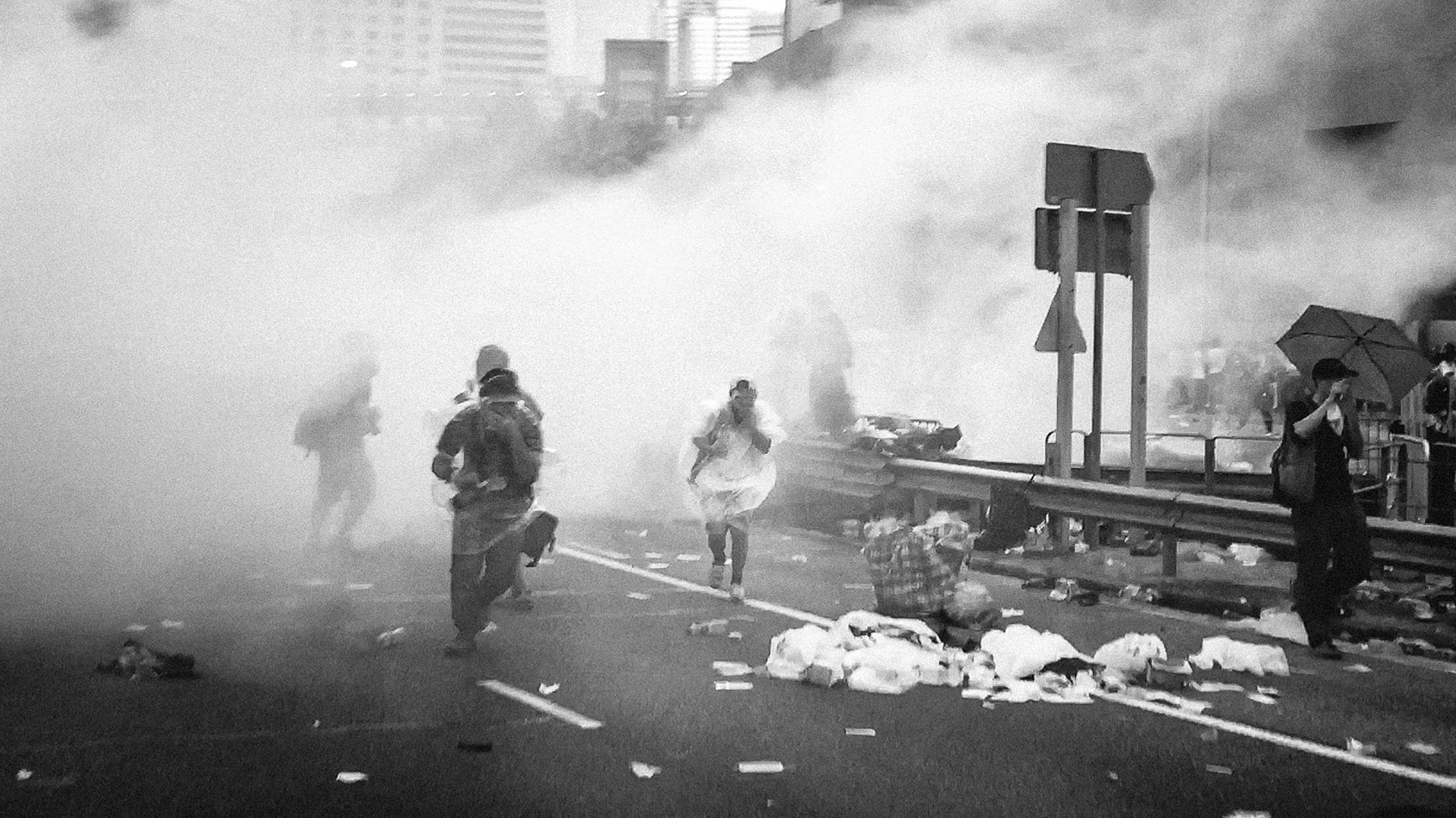Traffic cones, oven mitts, and umbrellas: Demonstrators are finding inventive new ways to protect themselves from police aggression.
In June, the Hong Kong protests over the government’s controversial extradition bill escalated, and they’re escalating further still. Demonstrations over the bill have morphed into a fervent expression of broader anti-government grievances, fueled by a mounting fear that Hong Kong’s government wants to homogenize the city into the mainland. (An increasing number of people, particularly Hong Kong youth, are ready to disavow their Chinese identity.) Demonstrators have been met not only by heavily armed police squads, but assailed upon by masked mobs of thugs wielding iron poles. Police did little to stop a particularly violent recent attack on civilians, when suspected triads ambushed commuters in a train station, and faith in the police as a protective unit has understandably waned.
Despite having comparatively spartan resources, protesters continue to fight back against authorities, increasingly coming up with inventive ways to keep safe and keep demonstrating: wearing traffic cones as armour, umbrellas as shields, and oven mitts as gloves to protect their hands while picking up searing hot teargas canisters. The makeshift aesthetic of the protesters is the aesthetic of DIY democracy.
According to AFP, online forums are filled with advice about gloves and where to buy them from, with nearby hardware stores often selling out of those recommended. One activist told The Independent their aim was to “be like water” in order to evade the authorities—referencing one of Bruce Lee’s mantras about maintaining resilience through spontaneity and adaptability. Protesters also use flash mob tactics—disappearing from one site when police turn up and quickly regrouping in another—to frustrate law enforcers as onlookers become increasingly concerned about violence and how the demonstrations will end.
Now Chinese authorities have warned against what they’re calling “color revolution” tactics, referring to Ukraine’s Orange Revolution of 2004 and other similar movements in former Soviet Union countries. These movements are characterized as non-violent revolutions, but Beijing’s government hasn’t ruled out intervention by the People’s Liberation Army, an increase in force that many see as inevitable.
Movements across the world have sprung up in solidarity with Hong Kong’s anti-government protesters. In Australia, several weeks ago, students at the University of Brisbane faced off against pro-Beijing demonstrators blasting the Chinese national anthem. In Canada, people have been showing support by marching through Chinatowns in cities from Calgary to Toronto. In Taiwan, a Hong Kong franchise specializing in Bubble Tea expressed unity with protesters by putting up a sign reading, “Stand with Hong Kong” and closing one of its stories in the city for a day, after which its products were boycotted by people in mainland China.
In Hong Kong itself, lawyers are holding silent protests. Legal professionals have traditionally avoided protests, but they have now marched twice since June, hoping business suits and restrained stances don’t make them a target police armed with tear gas—but wearing masks, goggles, and construction helmets just in case.







